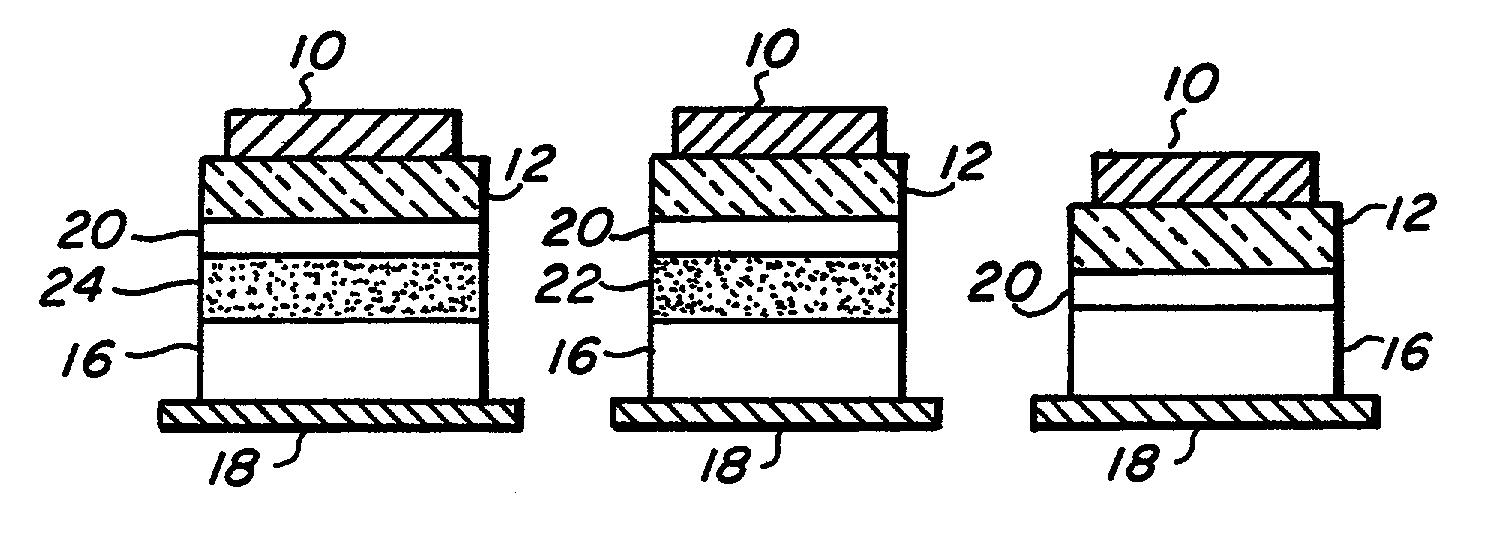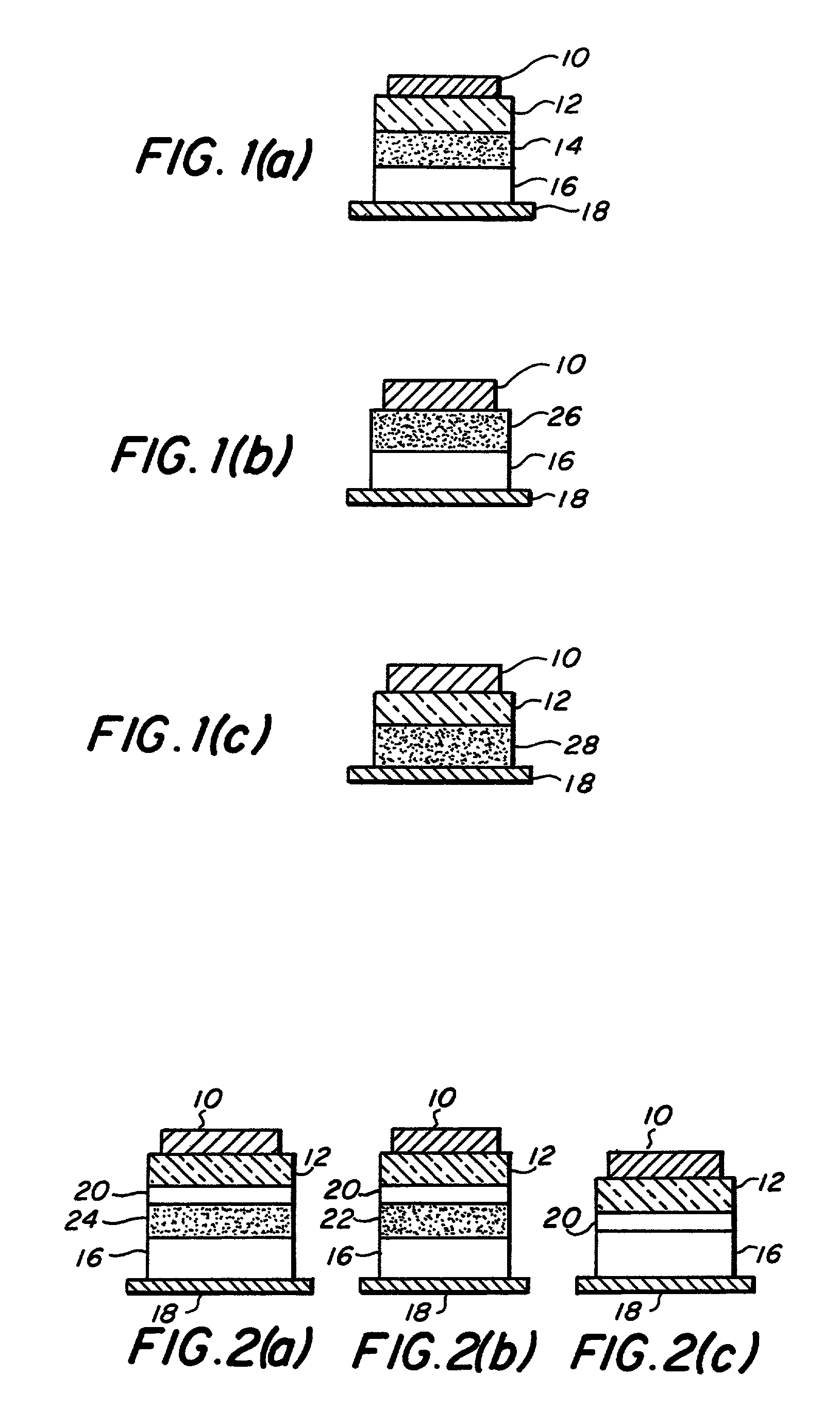Universal host for RG or RGB emission in organic light emitting devices
a light emitting device and universal host technology, applied in the direction of discharge tube luminescnet screens, discharge tube/lamp details, electric discharge lamps, etc., can solve the problems of large reduction of optical power of white oled, accelerate degradation and shorten the life of the device, etc., to achieve easy color tuning, good color chromaticity, and maintain device efficiency
- Summary
- Abstract
- Description
- Claims
- Application Information
AI Technical Summary
Benefits of technology
Problems solved by technology
Method used
Image
Examples
example 1
[0021]RGB emission was achieved with a universal host used for RG OLED pixels fabricated with similar device structures, with the exception of the emitting species. The blue emissive properties of the hole transport material, 4,4-bis(1-naphthylphenylamino)biphenyl (NPB) were utilized for the B OLED pixel (see FIG. 1(c)).
[0022]OLED RGB device structures and organic materials used in this example are shown in FIGS. 2(a) through 2(c). All materials were vacuum deposited inside a chamber under a base pressure of approximately 10−7 Torr. All devices contain of a glass substrate coated with a transparent anode material, here indium tin oxide (ITO). In addition, the hole transporting layer in all devices is NPB. The hole blocking layer is bathocuproine (2,9-dimethyl-4,7-diphenyl-1,10-phenanthroline)(BC) in all three devices. Lastly, all devices utilized 5,5′-bis(dimesityl-boryl)-2,2′-bithiophene (BMB-2T), as the electron transport layer.
[0023]For the red and green OLED devices (FIGS. 2(a) ...
example 2
[0024]We have also postulated that RGB emission can be readily achieved where the universal host used for RG OLED pixels is fabricated with similar device structures as described above in Example 1. The blue emissive properties of the universal host can be utilized for the B OLED pixel. The devices consist of glass substrate coated with indium tin oxide (ITO), a transparent anode material. For all of the devices, the hole transporting layers are NPB. The electron transport layers are composed of separate layers of o-TTA and 5,5′-bis(dimesitylboryl)-2,2′-bithiophene (BMB-2T). The o-TTA layer also functions to allow for generation and transmittance of blue light because it serves to prevent the formation of an exciplex between the NPB and BMB-2T layers (See Shirota, J MAT Chem., 10, 1–25 (2000), herein incorporated by reference). For the green and red devices, a composite film of the universal host material, BMB-2T, and dopant, would be inserted between the o-TTA and BMB-2T layers to ...
PUM
 Login to View More
Login to View More Abstract
Description
Claims
Application Information
 Login to View More
Login to View More - R&D
- Intellectual Property
- Life Sciences
- Materials
- Tech Scout
- Unparalleled Data Quality
- Higher Quality Content
- 60% Fewer Hallucinations
Browse by: Latest US Patents, China's latest patents, Technical Efficacy Thesaurus, Application Domain, Technology Topic, Popular Technical Reports.
© 2025 PatSnap. All rights reserved.Legal|Privacy policy|Modern Slavery Act Transparency Statement|Sitemap|About US| Contact US: help@patsnap.com


